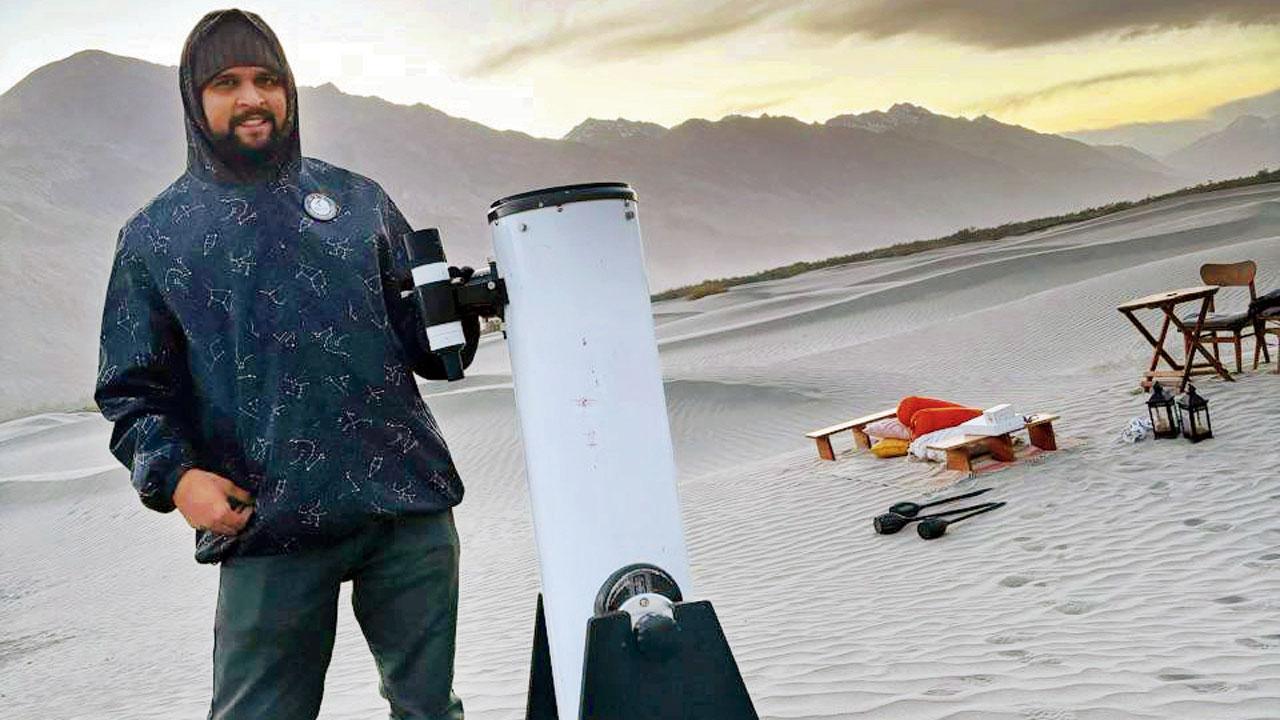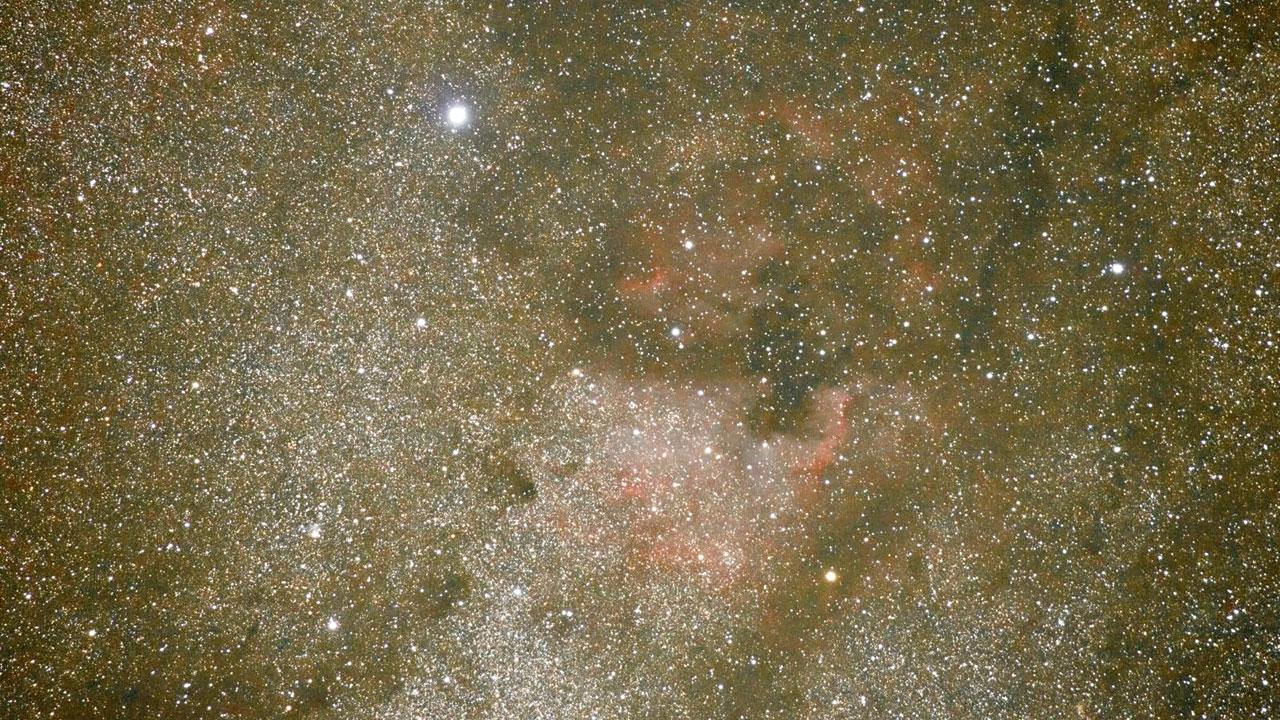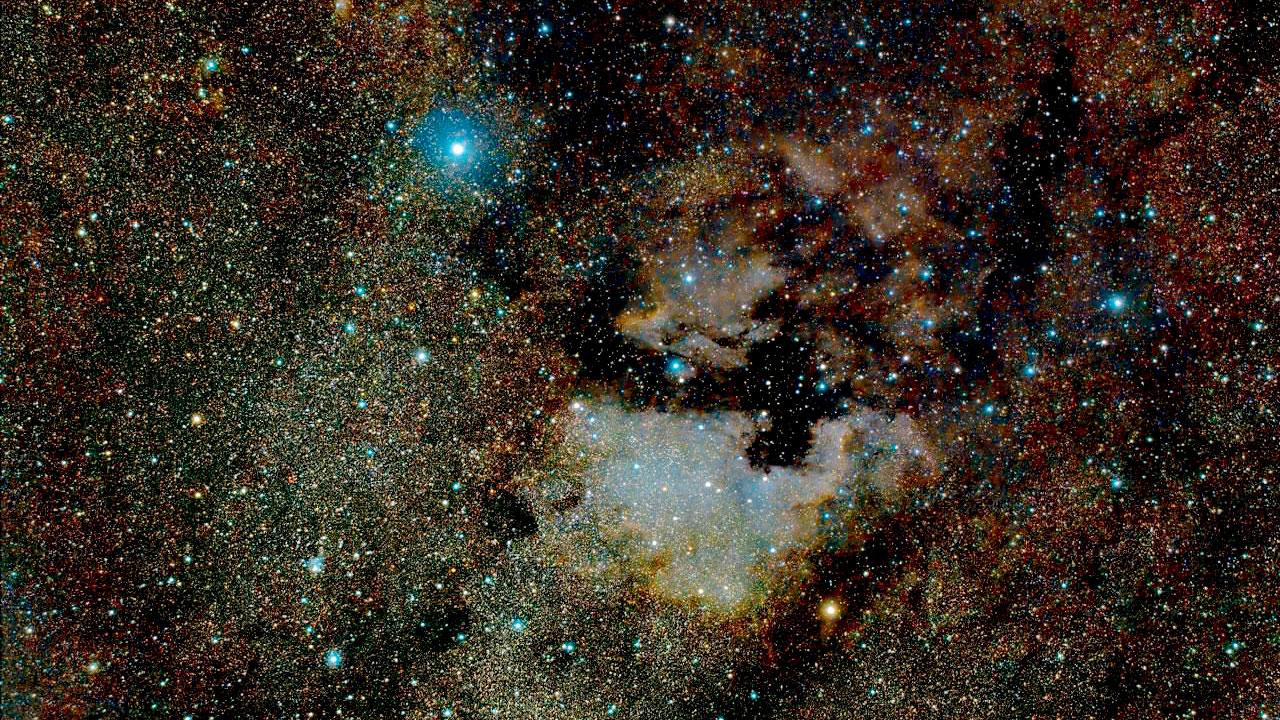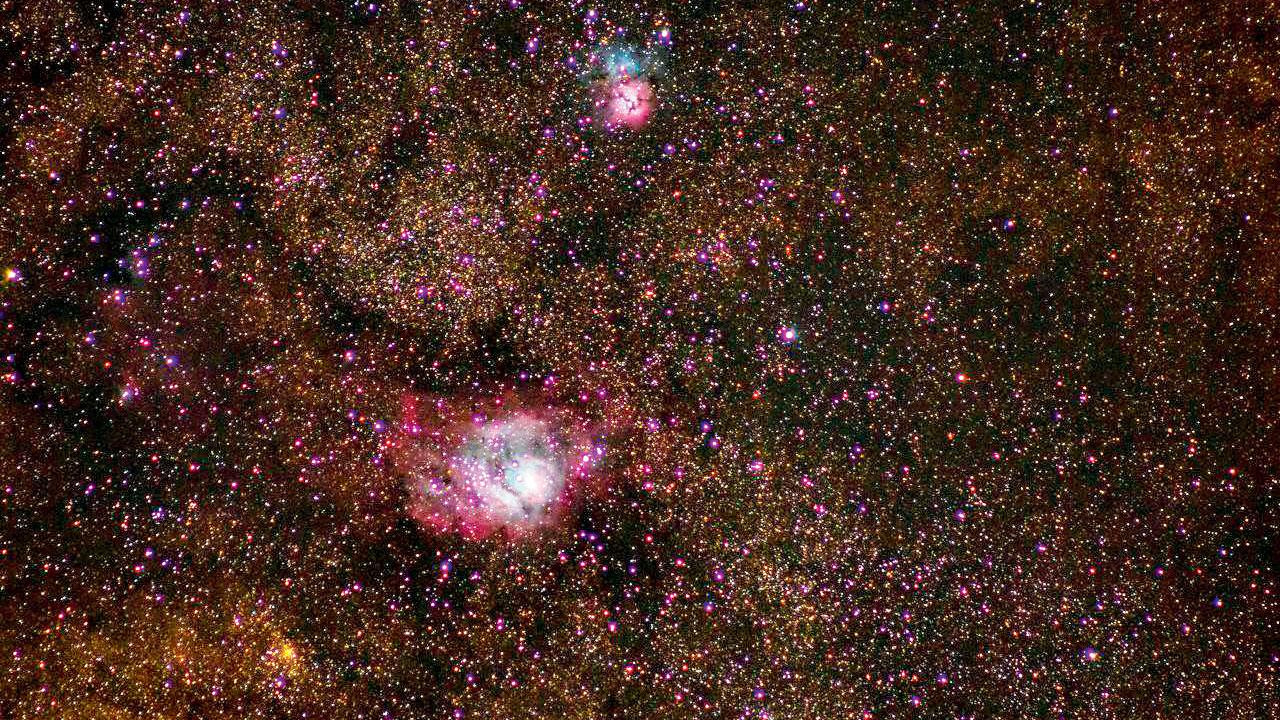Even as the fad for stargazing is on the rise among hobbyists, astronomers are turning to AI tech to help them capture sharper images of galaxies beyond

Mihir Gilbile with his telescopic camera during an astrophotography expedition in Ladakh
For 27-year old Mihir Gilbile, gazing at stars is both a professional and personal joy. As the tour faculty at the Horizon Astronomical Society in Vangani, in Thane district. Gilbile often takes participants through the mysteries and techniques that go into stargazing and astrophotography. “It is not as simple as taking photographs of landscape. There is a lot of mathematics and science that goes into it,” he explains. Since it was first experimented with in the early 19th century, astronomers have used high-powered telescopes and lenses for space exploration. Naturally, stargazers have been experimenting with technology from its early years. Today, astronomers around the world are turning to Artificial Intelligence (AI) as an innovative tool to get sharper images of space constellations.
ADVERTISEMENT
For a clear view

An image of the North American Nebula (before processing)
The exercise is a delicate one with many variables such as the lens, exposure and the nature of the targeted star or galaxy targeted that come into play. “We use computerised telescopes that can be handled remotely. These are trained at a constellation or galaxy, and left unobstructed so that they can gather data to create the right image,” he shares. The exposure can range from anywhere between 10 minutes to five hours. In this duration, the equipment can face multiple hurdles such as heating up, atmospheric interference and data lags that affect the picture.
A key part of the experiment then is the processing. “You need to understand that distance is often irrelevant. Since galaxies and nebulas emit light on different wavelengths, you need filters to truly see them as humans do,” he explains. The telescopic photographs are often in black and white. These are then subjected to multiple filters such as hydrogen, RGB (Red Green and Blue) channel filters, sulphur channels to clear the image for the human eye.
Future technology
Since 2018, scientists and astronomers have been experimenting with software to simplify this process, he shares. Software like Asiair, Luminar AI or Noise Xterminator serve to spruce up pictures taken in a short time. “If you see, traditionally, astrophotographers would stack the images and process it on Photoshop. The quality would depend on the individual processing, their technique, experience and understanding. Currently, AI is used to remove the noise. It reads the image better, and differentiates much better between a normal pixel and plain noise,” Gilbile explains. It also eliminates the manual hours spent poring over pixels painstakingly to get an accurate image. Most software, he adds, also come with features for pre-processing. This allows them to set parameters and limits to focus specifically on an image, eliminating any further distractions, he shares.

An image of the North American Nebula (after processing)
“I turned to AI software in the last year, and the results have been phenomenal. However, it has been steadily on the rise. While scientists did not specifically know it was AI, as the versions have evolved, it has become a standard use case across the scientific community,” Gilbile remarks. Does that change the human effort of discovery, we wonder. “No,” says Gilbile, “Science is about accuracy. As long as technology allows us to get accurate images, clear data and enables us to read and understand it better, it can prove only beneficial.”

A clear image of the Lagoon and Trifid nebula processed by AI software
What is it?
AI-enabled software helps in cleaning up and sprucing data and images captured through telescopic lenses for clearer images of constellations and galaxies.
How it works?
The software processes the data and the images faster, based on previous analysis. It helps to eliminate noise, pixelation, or any interference created during the camera exposure, with minimal errors. Clear reading of data and set parameters enable a sharper image post-processing.
Who it benefits?
For now, the technology is benefiting astronomers and stargazers who are turning to it as a tool to simplify their processes. As the medium evolves, hobbyists speculate how it might change the nature of stargazing with specific and targeted parameters and accurate focus.
 Subscribe today by clicking the link and stay updated with the latest news!" Click here!
Subscribe today by clicking the link and stay updated with the latest news!" Click here!









